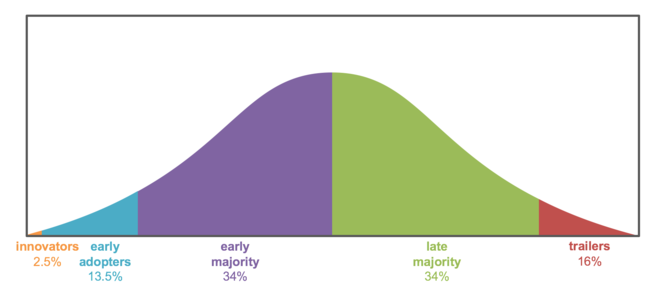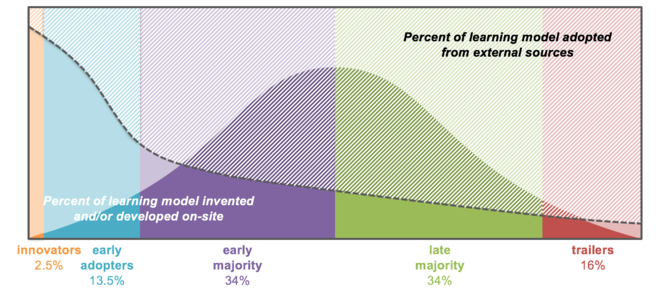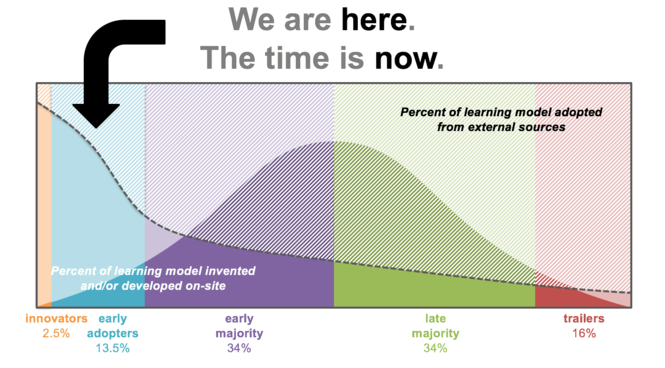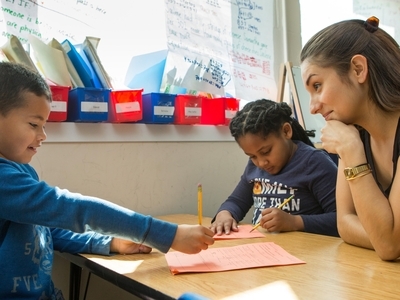Factory Model Change Won't End the Era of Factory Model Schools
Topics

Next generation learning is all about everyone in the system—from students through teachers to policymakers—taking charge of their own learning, development, and work. That doesn’t happen by forcing change through mandates and compliance. It happens by creating the environment and the equity of opportunity for everyone in the system to do their best possible work.
Learning models designed to enable deep development of agency-driven, 21st century competencies cannot take root through the use of rules-and-compliance-driven 20th century change processes. The contradiction between them is fatal. We need to think more deeply about our strategies for change.
This post originally appeared on Learning Deeply, an Education Week blog.
America's public schools, these days, are frequently and unflatteringly described as learning factories, where kids are processed in age-based batches and moved along an inflexible assembly line. And to be sure: some factories are less factory-like today than many of our schools.
A growing cloud of innovative educators, including the Hewlett Foundation's Deeper Learning Network and our own grantees and partners at Next Generation Learning Challenges, have been working feverishly at a complex and daunting challenge: creating demonstrably effective, 21st century, next gen alternatives to the industrial-era school model, where deeper learning can thrive. There might be 500 to 1000 of these schools now serving students, nation-wide, with many showing promising results.
But hang on. That's not really the hard part.
The hard part, and the part that we tend to get disastrously wrong in public education, is how to move these new approaches, mindsets, success definitions, and measurement benchmarks into common use without losing the power, promise, complexity, and depth of the original ideas. So that tens of millions of schoolchildren, not just tens of thousands, can benefit and emerge from high school fully prepared to meet the challenges of 21st century life.
Why is that so hard? Because the only change processes we've ever used in public education to significantly alter practice and the student experience reflect—here it comes again—industrial-age thinking and methodologies.
We are deluding ourselves if we try to end the era of factory-model schools by using factory-model strategies for change.
In the words of Albert Einstein: "We cannot solve our problems with the same thinking we used when we created them."
Tom Rooney understands that. Tom is the superintendent of Lindsay Unified School District in California's Central Valley, a 100 percent poverty enrollment district that has emerged as a high-performing lighthouse for reformers and an influential model of next gen, personalized learning. "We have to say it over and over again," Tom said to me recently after a presentation to other educators. "We are codifying what we're learning and trying to share it as broadly as possible. But we always say: Please do not simply try to 'do the Lindsay model.' We hope they learn something useful from us, but they can't just transfer the model and expect the same results."
The staff and leadership at CICS West Belden in Chicago, a Distinctive Schools campus and a part of the Chicago International Charter School (CICS) network, also a luminary in the world of next gen learning, understand it too. "We had to learn our lesson the hard way," principal Colleen Collins told a room full of NGLC grantees this past spring. "By the time we got to our third cohort [of teachers and students], we thought we had the model pretty well figured out. So our process was different with them, more directive, less inviting of them to participate in shaping it, and that cost us. The lesson we learned was: Everyone needs to feel that they're part of the pilot." Everyone, she was telling us, deserves to feel that they're making a contribution, not simply following a script or a checklist. They need to feel that they're a builder, not a renter.
Rooney and Collins are making a point that all of us in the deeper/next gen learning space should paste, permanently, on our refrigerator or office doors. In order for agency-driven, personal efficacy-building, next gen forms of learning to advance broadly, the change processes we use to make that happen must reflect those same core tenets. Learning models designed to enable deep development of personalized, agency-driven, 21st century competencies cannot take root through the use of rules-and-compliance-driven 20th century change processes. The contradiction between them is fatal. We need to think more deeply about our strategies for change.
The challenge in getting this right is that both the factory-model school and the industrial-era strategies for scaling seem to us like water feels to a fish. We're so accustomed to them that (for the most part) we don't question their presence or their legitimacy. Of course my child will be grouped in something called a grade, and of course she'll receive scores and marks I understand in subjects that I recognize, like English and math and social studies. Of course we know how to scale up next gen learning: we find models like Lindsay and CICS West Belden and then we replicate them. And when we really want to get serious, we institute mandates with stakes that will incentivize even broader replication.
Here's a different way to think about this, with implications for educators and systems-shapers that I believe will determine how all of this turns out.
We all recognize the graphic below: it's the Rogers Adoption Curve, depicting how innovations take root, find critical mass, and gradually become adopted across whole populations.

The Rogers Adoption Curve is seminal work and has helped countless change-makers envision how innovations can become broadly adopted. But it sends subliminal messages that make it, we feel, incomplete in telling the story of how next gen learning can grow and thrive.
Telling that story requires a second curve, as follows:

Call it the Invention Curve. This curve defines the share of a school's learning model and organizational design that is invented internally versus adopted or adapted from external sources. It is utterly non-scientific. But it surfaces two profoundly important points:
- Everyone invents. Everyone. This is the more deeply shaded area below the Invention Curve, reflecting practice-level innovation. The Lindsays, CICS West Beldens, Kettle Moraines, Summits, and other pioneers in the wafer-thin Innovators segment are inventing perhaps 90 percent of their next gen learning models. They are impatient visionaries and super-innovators. Those in the early adopter slice—most Digital Promise and EdLeader21 districts, perhaps some of the 3,000 Future-Ready Pledge signers—are (or should be) inventing large chunks of their next gen learning approaches to suit their local contexts, capacities, and policy/regulatory environments.
The early and late majority practitioners may not be first in line to push the envelope of traditional school design. But given a sufficiently substantial base of evidence, strategies, external resources and tools, they will adopt—and if they're observing and adopting with fidelity to next gen learning's core attributes, they too will invent portions of their model themselves. Even the trailer-laggards must invent and own their next gen approaches to some degree. Where it is implemented 100 percent out of sheer off-the-shelf application and compliance, next gen learning ceases to exist. - What's above the curve is crucial. The practitioners across the entire Rogers Curve are depending on pursuing next gen learning within environments that, if not explicitly enabling of these approaches, are at least not hostile to their efforts. The super-innovators just ignore conditions that don't suit them and they create with duct tape and baling wire whatever resources the market and policy fail to provide. Early adopters will need at least a little velvet, a bit of grease, and a few next gen-oriented contractors to see their way through. Late majority adopters will need quite a bit more—and those supports and environments will need to reflect next gen design principles that focus on agency rather than compliance, enabling rather than mandating, and continuous reflection and refinement rather than checklist-style implementation. This is the question that will determine much of the future of next gen learning. Will the people and organizations addressing the challenges of system-level innovation (resources, evidence, external supports, tools, policy/regulatory/contractual environments) do this work well enough, and quickly enough, and in ways sufficiently tuned to the core principles of next gen learning, to give the adopters what they need in order to succeed?

Partly fueled by pushback on testing and NCLB-driven narrowing of curricula, partly enabled by ESSA (at least in theory), and gradually being given form by the super-innovators, next gen learning is beginning to have a moment. The nearly century-old industrial-era approaches to school design and driving change at significant scale exert a tremendously powerful magnetic pull. The opposing magnetic force is the vision we all hold for the richer, deeper competencies represented by a true 21st century high school diploma. Attentiveness, investment and commitment to both sides of the Invention Curve—practice-level innovation below, systems-level innovation above—is what we need in order to lean toward the better magnet.




